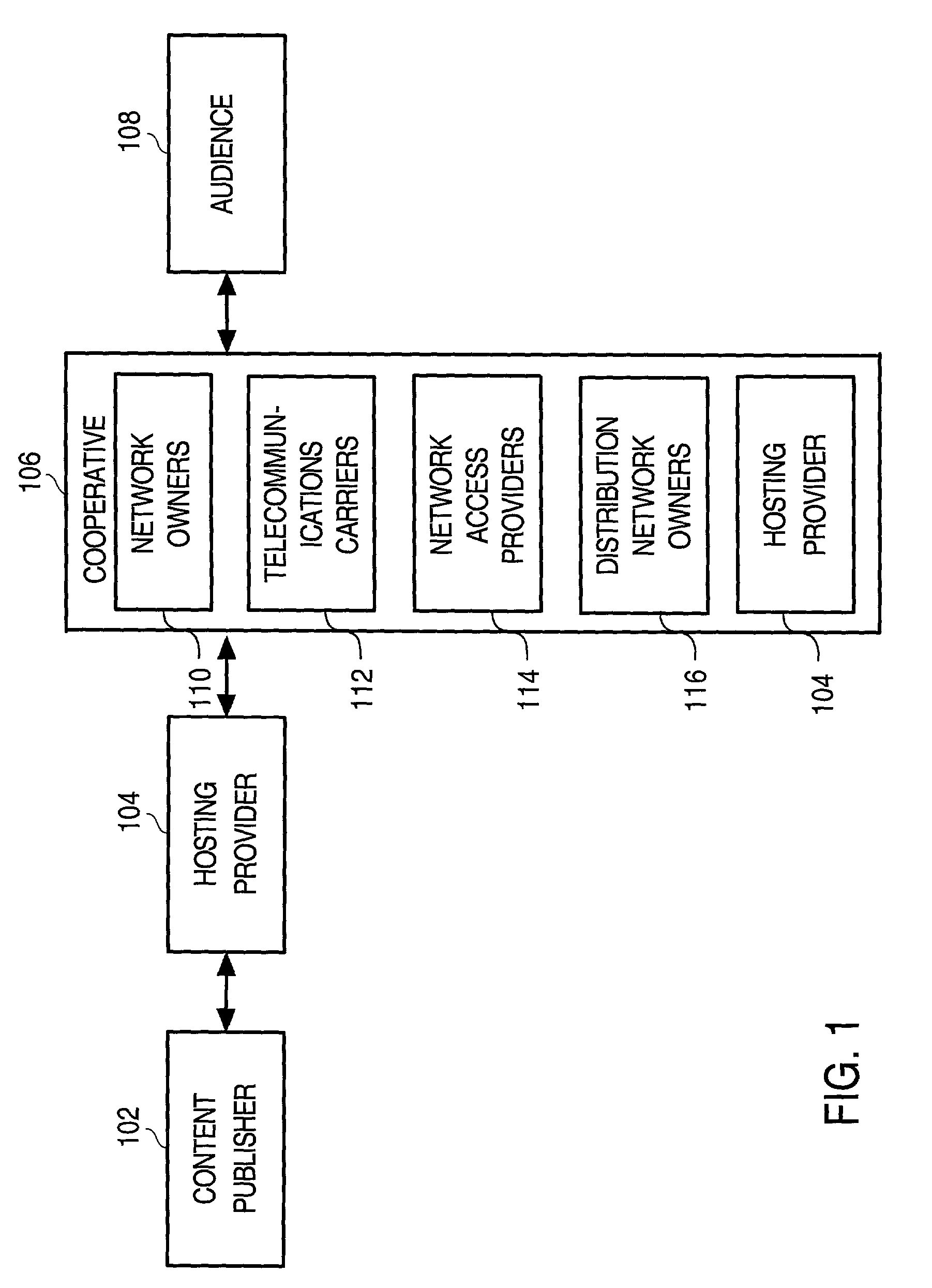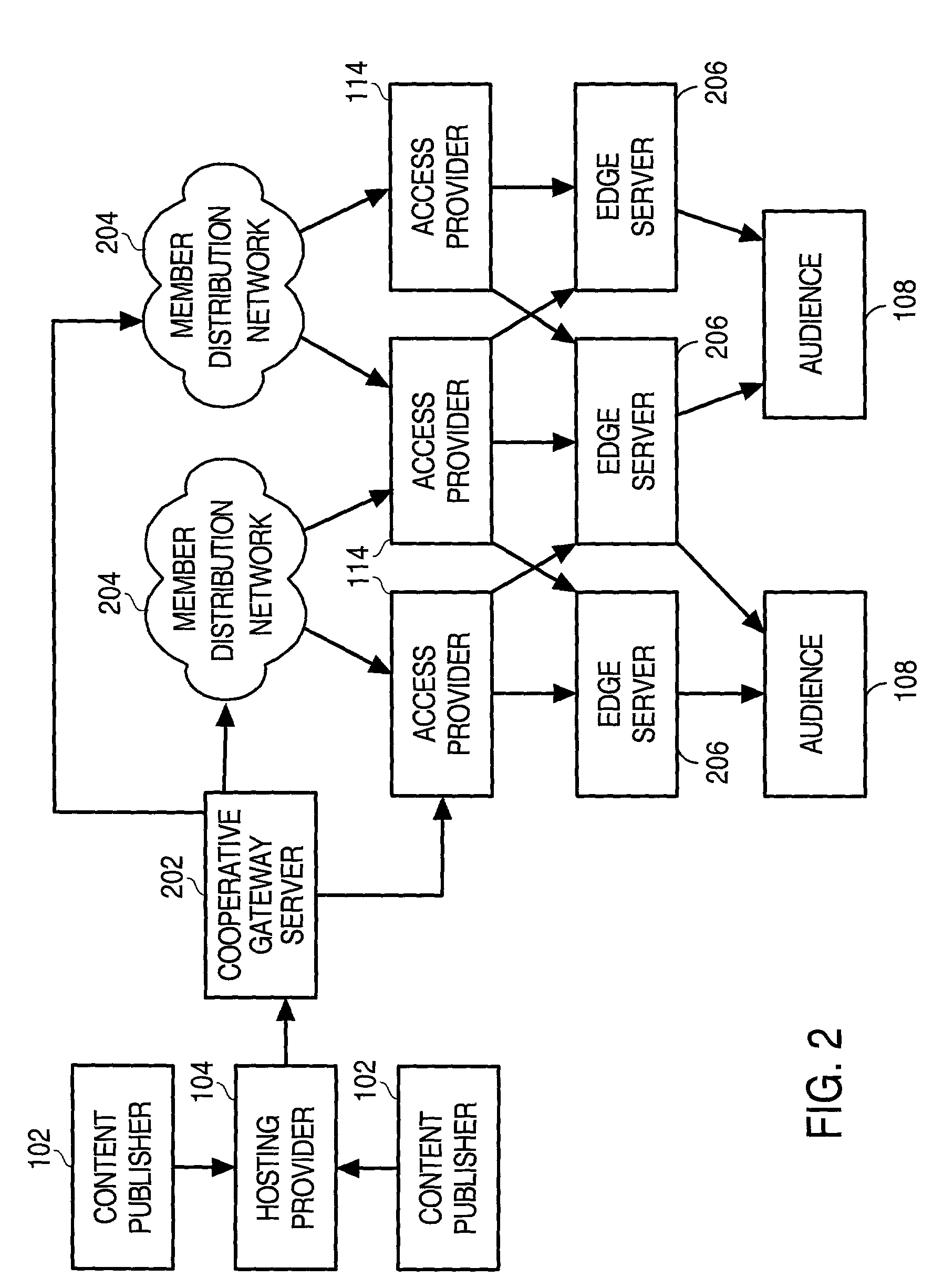Cooperative management of distributed network caches
a distributed network and cache technology, applied in the field of communication over a network, can solve the problems of affecting the visibility of content publishers' operations, affecting the network traffic awareness of content publishers, and no longer receiving requests or directly responding to requests,
- Summary
- Abstract
- Description
- Claims
- Application Information
AI Technical Summary
Benefits of technology
Problems solved by technology
Method used
Image
Examples
Embodiment Construction
[0021]A method and apparatus for cooperative management of distributed network caches is described. In the following description, for the purposes of explanation, numerous specific details are set forth in order to provide a thorough understanding of the present invention. It will be apparent, however, that the present invention may be practiced without these specific details. In other instances, well-known structures and devices are shown in block diagram form in order to avoid unnecessarily obscuring the present invention.
Functional Overview
[0022]Embodiments of the invention facilitate cooperation among various Internet service providers to provide improved distributed network services. The network service providers that are constituent to a cooperative organization (hereinafter “cooperative”) represent various standpoints, or perspectives, within the overall Internet content distribution network. For example, in one embodiment, the cooperative includes but is not limited to netwo...
PUM
 Login to View More
Login to View More Abstract
Description
Claims
Application Information
 Login to View More
Login to View More - R&D
- Intellectual Property
- Life Sciences
- Materials
- Tech Scout
- Unparalleled Data Quality
- Higher Quality Content
- 60% Fewer Hallucinations
Browse by: Latest US Patents, China's latest patents, Technical Efficacy Thesaurus, Application Domain, Technology Topic, Popular Technical Reports.
© 2025 PatSnap. All rights reserved.Legal|Privacy policy|Modern Slavery Act Transparency Statement|Sitemap|About US| Contact US: help@patsnap.com



